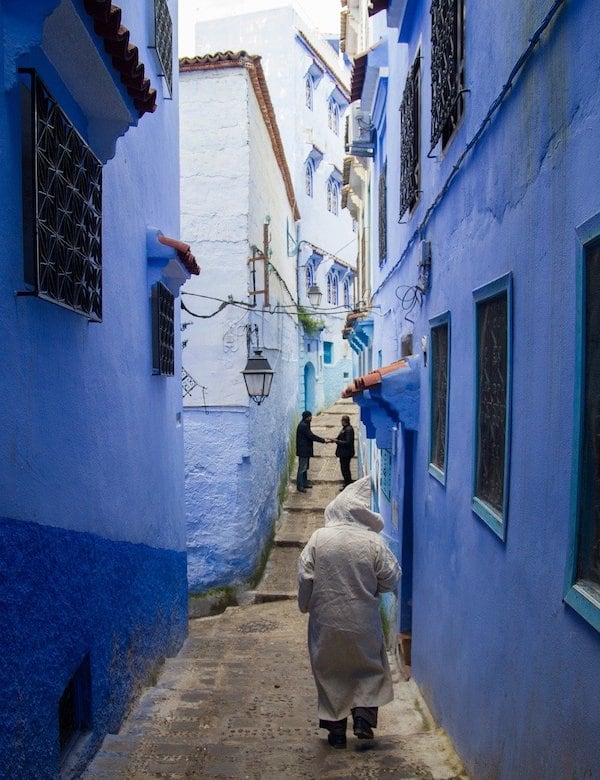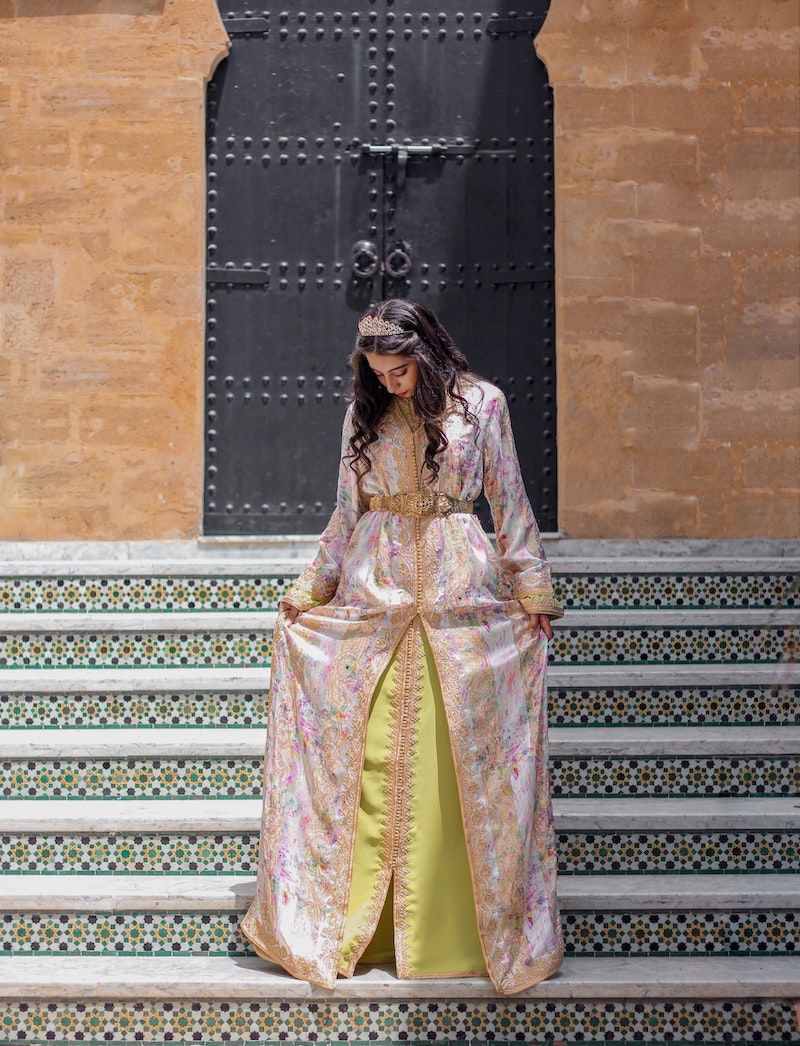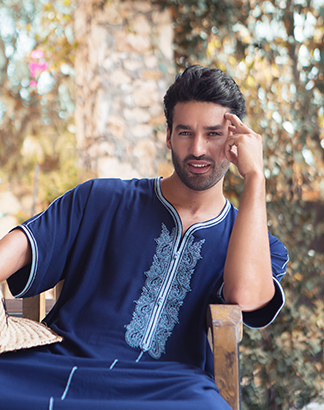A new map of worldwide supply is being created. Emerging markets, including Myanmar and Vietnam, compete to overtake China and Bangladesh as increased prices and regulatory worries start to bite. However, the demand for a quick, adaptable, and responsive production system pushes many businesses to look at countries far nearer to the UK.
With this change, fashion in Morocco is well-positioned to profit. The north African nation, which is only a three-and-a-half-hour flight away from the United Kingdom and most of Europe, has a fast-growing apparel and textile industry specializing in knitwear, denim, and wovens.
By utilizing its geographical location, fashion in Morocco is also competing to emerge as a supply center for Europe’s quick fashion business. For Spanish juggernaut Inditex, famed for its capacity to introduce trend-driven commodities into stores swiftly, Morocco already ranks as an essential procurement region alongside Portugal and Turkey.

Fashion in Morocco and its apparel sector are significant. One hundred eighty-three thousand people are employed there, which is 26% of all working-class jobs in the nation, and it generates 1.1 billion clothes annually.
The Association Marocaine des Industries du Textile et de l’Habillement (AMITH), which promotes fashion in Morocco and organizes the trade fair, along with the Moroccan government, both have plans to grow the industry even more.
Prominent Moroccan producers have been selected to serve as what AMITH alludes to as “railcars,” coaching and counseling smaller enterprises on how to modernize and boost industrial capacities as part of an aggressive ambition to expand the business shortly.

Supply of Fashion in Morocco
Fast fashion makes up most of the fashion in the Morocco market, showcasing Morocco’s unmistakable benefit as a hub for production for European labels. Morocco’s second-largest fashion sector is devoted to “Rapid industrialization,” which is preceded by “Local crafts.” It creates beautiful harmony between speedy and slow fashion in Morocco and highlights the country’s substantial benefit as a blended production economy for European branded products.
The marketplace also includes a sizable portion of Morocco’s expanding jeans sector. To ensure good interaction and that no information is misinterpreted, they are well-versed in the market and how to interact with the textile mills.
A Guide To Morocco’s Best Fashion Manufacturers
Morocco is a dependable site for filming due to its governmental and social safety. Morocco can provide quicker production time than its Asian competitors because of its closeness to Europe. The proximity to the west and the link therein guarantee negligible environmental impact and encourage sustainable development. Given that production in Morocco is duty-free thanks to EU accords, fashion in Morocco also performs exceptionally well in terms of budget.
Read more: Top Five Companies Producing Textile Goods in Morocco
Morocco is a gold mine whenever fashion in Morocco pertains to high-quality handcraft products. Morocco is an expert in various methods and supplies for your one-of-a-kind handwoven selection.

Codes of Fashion in Morocco
Morocco is an affluent society regarding tradition, customs, population, culture, religions, terrain, weather, and other factors. Each of these facets of the nation impacts how Moroccans dress. The djellaba and kaftan are two elegant clothes that speak to the region’s opulent apparel style among the range of fashion in Morocco.
What are the Moroccan outfits called?
- Djellaba (Kaftan)
- Takchita
- Haik
- Gandoura (Deraa)
- Melhfa
Any Moroccan city’s marketplaces will undoubtedly have some men and women going about in wide, baggy-covered dresses over their regular attire. The Djellaba is the name of this clothing. Excluding the head, hands, and feet, it encloses the complete body.
In terms of style and design, the djellaba for women differs from the one for males. Women wear a djellaba for many purposes. The first thing that attracts notice is how cozy and attractive it is. In a Muslim nation, it is a women’s dress to don. Some women choose to put a shawl around their head or neck in addition to it. Additionally, it is used on religious holidays when spending time with relatives.
Men don a djellaba exclusively on exceptional cases, occasionally capped with the fez or Tarbouche, a well-known red cap from Morocco, and Baboush or Belgha, a pair of yellow leather slippers. The djellaba of a woman is more vivid and colorful than that of a male, and today’s djellabas are changing significantly. According to some chapters in the Quran, the djellaba is a gown that Muslim women are expected to wear. A djellaba is typically used outside the home, and there are djellabas for particular events and daily usages.

The Moroccan outfit that resembles a djellaba but lacks a hood is known as a kaftan. As one of the best pieces of Ottoman apparel worn by the aristocracy, the kaftan has its roots in the Ottoman Empire. It has undergone alterations throughout the years, just like other clothing.
Women in Morocco don it on special days like weddings. On her wedding day, the bride usually wears a kaftan. It is additionally worn underneath a Takchita, a similarly exquisitely embroidered dress with hand-made, classic buttons for the front, broad sleeves, and a wide strap wrapped around the waist. A kaftan, unlike a djellaba, is used inside the home.
In Morocco, visitors from other countries are permitted to wear traditional Moroccan attire. It is quite acceptable and even highly regarded. A man can layer a woolen djellaba on his clothing in the cold to stay warm. In addition, a woman can dress in a kaftan to greet friends if she has welcomed them over to enjoy a celebration.
The Haik is a classic white outside dress woven of silk and wool that is used by ladies in more religious and chilly regions of Morocco. It embraces the entire body from the body’s face and hands.
Both men and women dress in this summertime outfit. The Gandoura is known for an interwoven thread and sided pocket garment that is both elegant and cozy. It is a typical Berber clothing with short sleeves that is well-liked in Algeria.
Saharan men wear an uncovered side of their Gandoura known as the Deraa. It maintains the body aired as a result. The front’s gold lines are often done by hand. Under their Gandoura, Sahrawis wear quandary trousers, traditional loose clothing that makes it easier for males to sit on the ground. The Deraa typically originates in two colors: blue and white. The blue Deraa is known to wear daily; the white Deraa is dressed for wedding ceremonies and other particular events.

These cozy, prolifically loose-fitting pants with a groin area that reaches the knee and deep pockets—which are incredibly useful—are also known as Aladdin trousers or harem pants. They were initially Persian trousers that Moroccan men wore. It appears in many designs and colors and has a bohemian aspect that draws travelers.
The Melhfa, popular clothing favoured by women in southern Morocco, is very distinct from the djellaba. Women in Sahrawi use Melhfas to shield themselves from sandstorms.
It is a sizable, colorful cloth that coils around the body to shield it from the warmth. It is about 4 meters in length. The Melhfa, typically dressed in black or blue, has seen various alterations as the youth of today don it with more delightful colors.



















